Autumn Escapes to Greece’s Mountains and Lakes
When the summer crowds depart, Greece’s...
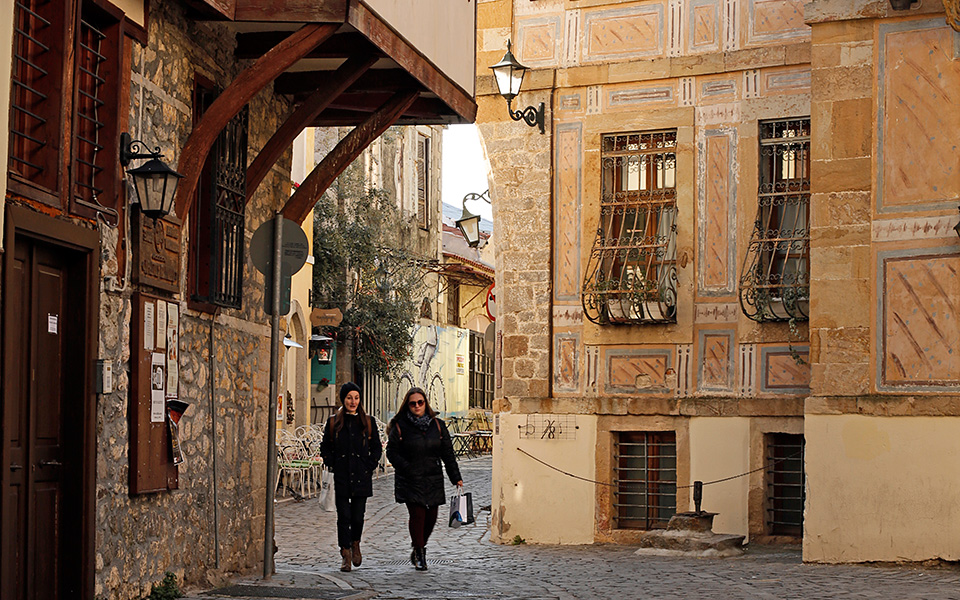
The Old Town of Xanthi
© Nikos Kokkas
“I was born on the 23rd of October in 1925, in the Xanthi of old, and not the other, awful one, which was built later by the internally displaced migrants. The co-existence [of peoples] in that time, a copy of the Belle Epoque with authentic Turkish minarets, gave color and content to a kaleidoscopic society from all corners of Greek lands that happened to find itself living in a borderland and dancing the Charleston in public squares.” So wrote the legendary composer Manos Hatzidakis (1925-1994) in his autobiography, describing the city in which he was born and lived the first seven years of his life.
Indeed, from the mid 1860s until about the 1930s, Xanthi flourished. The prosperity came thanks to a decree issued by the Ottoman sultan in 1859 which allowed other peoples, aside from the Ottomans, to engage in the tobacco trade. In a few years, the population of Xanthi tripled in size.
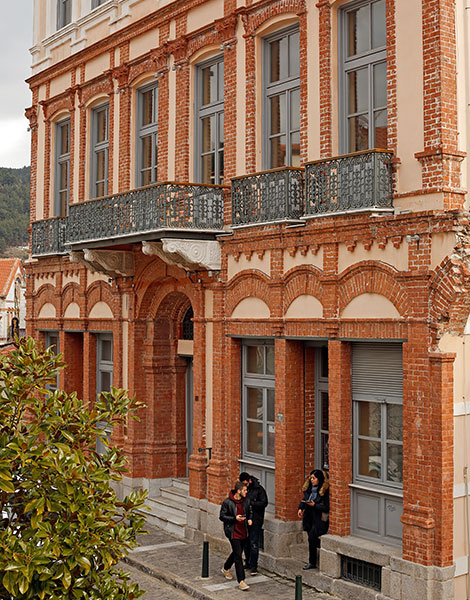
The house of Manos Hatzidakis in Xanthi
© Nikos Kokkas
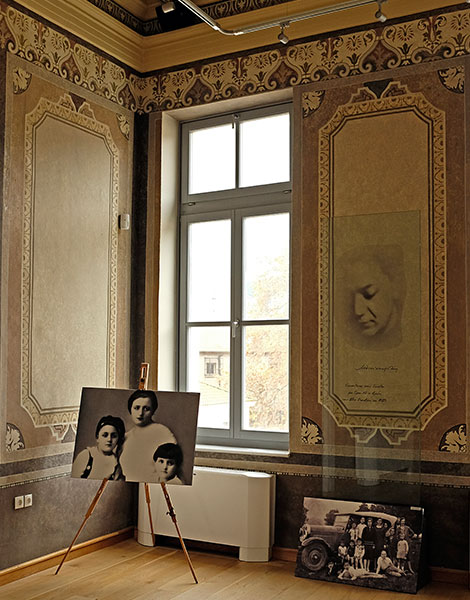
The house of Manos Hatzidakis in Xanthi
© Nikos Kokkas
The premium Basma tobacco variety, destined for luxury cigarettes as one of the best and most expensive in Europe, began to be widely cultivated, attracting affluent families and workers alike to the city from many different areas. By the end of the 19th century Xanthi was home to consulates, banks, insurance offices, cabarets, 150 shops, 50 inns, clubs, unions, associations, and, of course, tobacco processing plants. Xanthi’s unique character was shaped by the bourgeoisie and the workers.
The different ethnic groups (Turks, Bulgarians, Greeks, Armenians, people from Epirus, Halkidiki, Eastern Rumelia, Asia Minor and the Pontus region) lived and worked side-by-side, contributing to the social and cultural melting pot of Xanthi. The city’s economic growth was accompanied by a significant cultural and artistic development, a legacy that has been kept alive through the centuries and is still visible today, in the form of a plethora of cultural events and associations.
From about 1860 until 1920, the impressive mansions of the Old Town were built. These were the homes of the tobacco merchants. Outside of the Old Town were the large tobacco warehouses and the workers’ houses. In 1977 the Old Town was declared a protected settlement, while in 1995 approximately 600 buildings throughout Xanthi were listed as protected edifices.
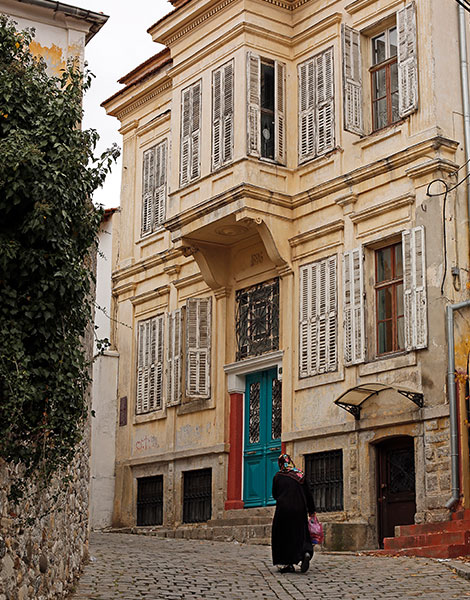
The Old Town of Xanthi
© Nikos Kokkas
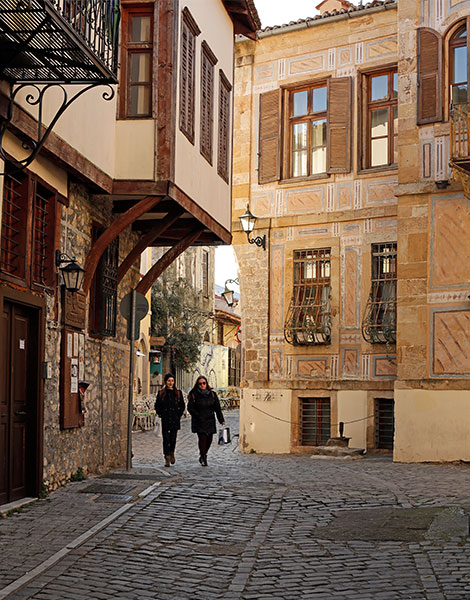
The Old Town of Xanthi
© Nikos Kokkas
The home of affluent tobacco merchants, the Kouyioymtzoglou brothers, was built in the 1860s according to plans developed in Russia featuring twin residences sharing a courtyard with a hamam. Today it houses the Folk Art and History Museum of Xanthi.
(7 Antika, tel +30 25410.25421, open daily except Mondays 09.00-14.30, 2 euros)
One of the buildings belonging to the Progressive Union of Xanthi (FEX). It was built in 1900 in the neoclassical style and today is a protected building. It is located at the intersection of Mavromichali and Palaiologou.
One of the oldest buildings in the city, constructed sometime in the mid 19th century and a classic example of Macedonian architecture with wood-carved elements and the characteristic jettied upper floors. Located at the intersection of Orpheos and Pindarou streets, it is not open to the public at this time, but you can still arrange a visit by contacting the Municipality’s Cultural Center (tel. +30 25410.245420).
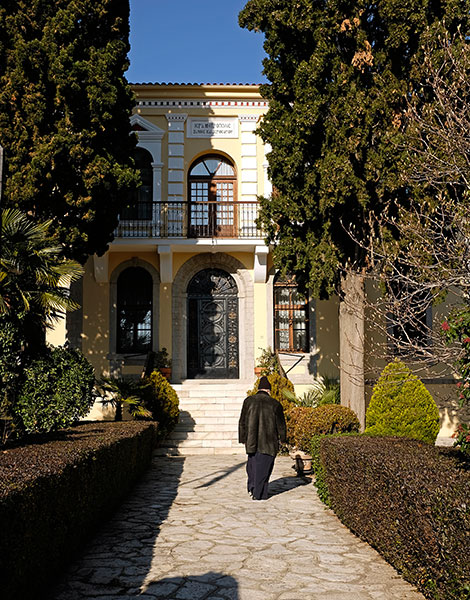
The entrance to the Metropolitan Hall of Xanthi
© Nikos Kokkas
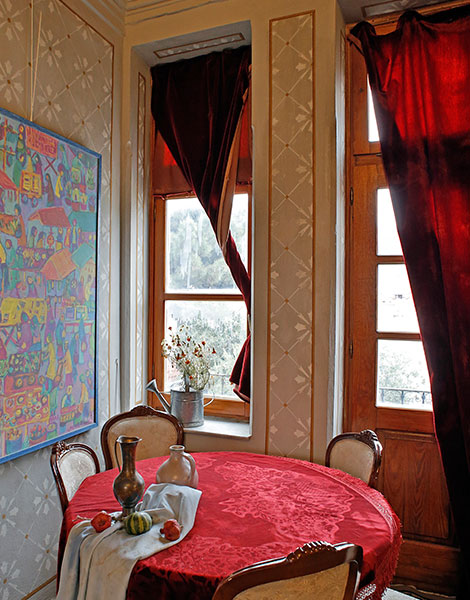
In the Folk Art and History Museum of Xanthi, you will see reconstructions of scenes of daily life.
© Nikos Kokkas
Built in the 1920s by a tobacco merchant, this villa is a characteristic example of the eclecticism of the interwar period, with many decorative elements. Today it houses the Foreign Ministry’s Department for Political Affairs in Xanthi (Orfeos 24).
This two-story neoclassical style building erected in 1897 is completely symmetrical and has an imposing entrance. Opposite you will see the city’s 1st Elementary School, housed in a building constructed in 1840 by the tobacco merchant Matsini. It is located in Mitropoleos Square.

A selection of portraits at the House of Shadow
© Nikos Kokkas
1. Visit the home in which Manos Hatzidakis spent his early childhood years. The enormous building operated, up until 2000, as a garrison headquarters. Today it is the Multiplex Space of Art and Thought. You will admire the ornate staircases, frescos and the impeccable restoration.
(Home of Manos Hatzidakis, 17 El. Venizelou, tel. +30 25410 99999)
2. Triantafyllos Vaitsis, uses simple materials – such as aluminum and fabric – and his limitless imagination and exceptional skill to create ‘shadow works of art’. His constructions resemble abstract sculptures, yet when placed in the right lighting conditions they create ‘shadow paintings’ on the walls that depict famous personalities and intriguing landscape.
(The House of Shadow, 33 Orfeos, Old Town, tel. +30 697.761.2726, 10.00-14.00 and 18.00-20.30. Entry is free, donations are welcome.)
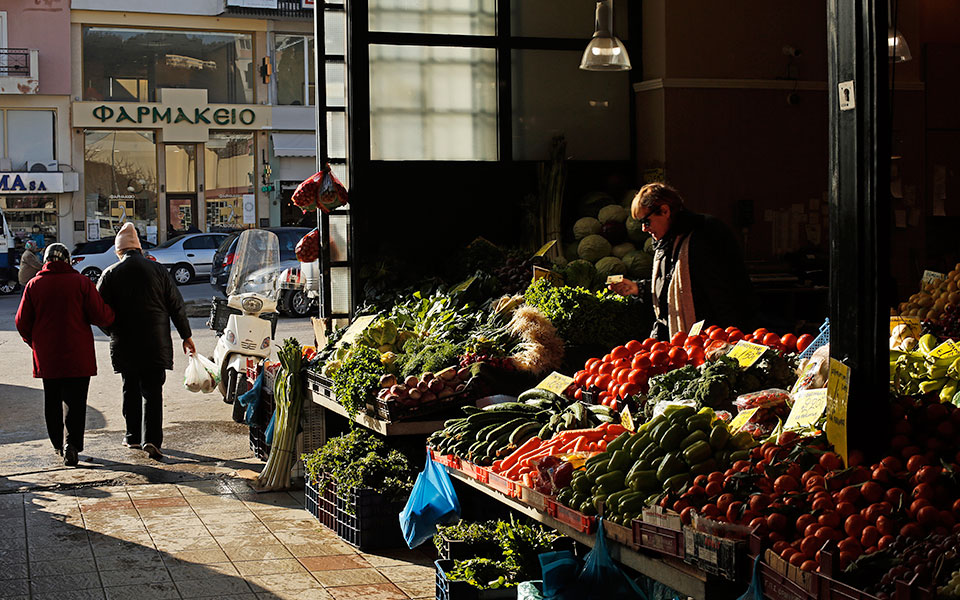
Fresh fruit and vegetables for sale in Xanthi
© Nikos Kokkas
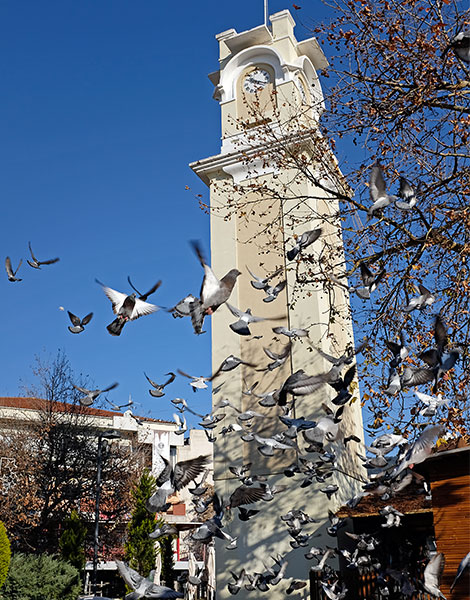
The Roloi clock tower in the central square
© Nikos Kokkas
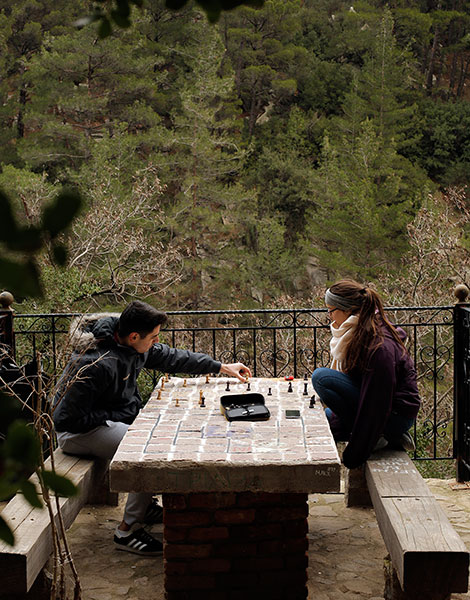
A couple plays a game of chess by the Kosynthos River
© Nikos Kokkas
3. On Saturdays the entire city is out and about. The renowned Xanthi bazaar attracts residents from across Northern Greece, as well as visitors from Bulgaria and Turkey. During the Ottoman era, salesmen with goods of all kinds would converge on the city. Today you will find everything from clothes and rugs to spices and fresh fruit and vegetables.
4. Running in between the Old Town and the traditional Samakov district is the Kosynthos River, and the new pedestrian bridge is the best spot to admire the landscape. A little further up the ‘Path of Life’ begins – a pedestrian trail about 1 km long which follows the river and is lined with beds planted with herbs and flowers. In the 15 minutes it takes to walk it you will also pass by a small church. Keep walking for another kilometer and you will come to the Castle of Xanthippi, a Byzantine castle which, unfortunately, has been left to fall into ruin.
5. Take a walk in the large central square of the town, which was designed in 1870. In its center is the ‘Roloi’ – a 20m tall clocktower built in 1859 as part of a mosque. Further down you will find the covered Municipal Market that dates to 1940 and continues to operate every day.
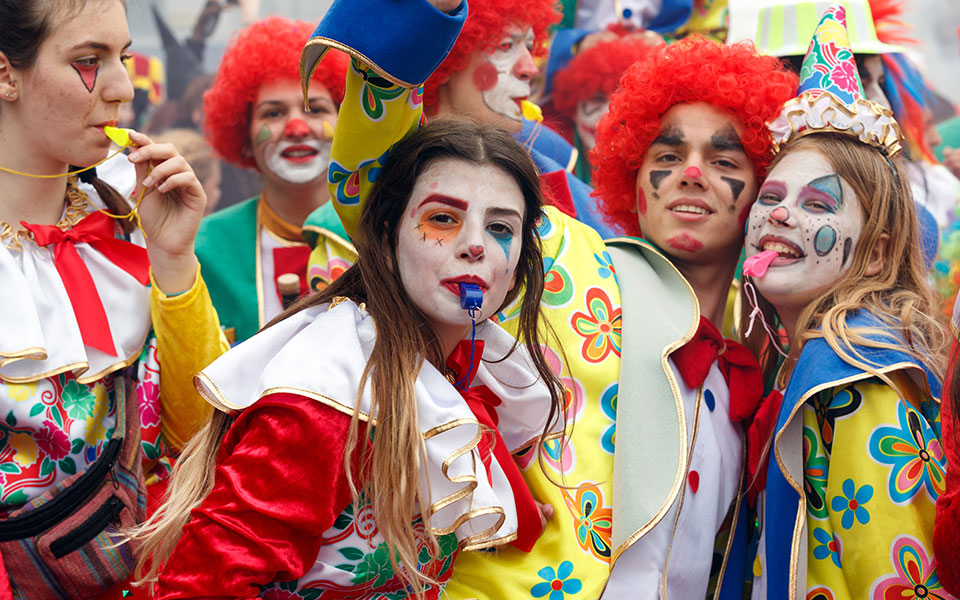
Xanthi Carnival
© Shutterstock
– The Xanthi Carnival is the biggest in northern Greece and well worth a visit to take part in the celebrations of the season. Similarly, the festivities in the Old Town during the first week of September are also highly popular. In both cases be aware that the central areas of the city will get quite crowded. – Copper coffee pots, heat-resistant glass teapots from Turkey, and handmade jewelry
– the Eleftheriadis family creates tasteful items of every sort, and also imports select items from abroad. All are available at reasonable prices.
(Art and Traditional handicraft Store Eleftheriadis (11 Filippou Amoiridi, Old Town, tel. +30 25410-29939)
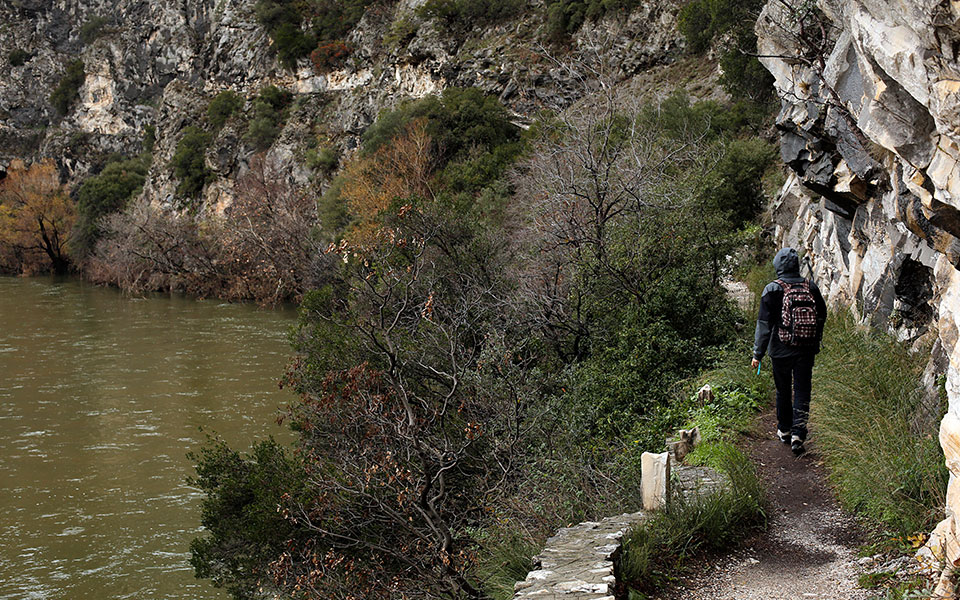
© Nikos Kokkas
The city of Xanthi is an ideal base for exploring the surrounding area. The Nestos River is about 13 km from the city and is the fifth largest river in Greece, forming the natural border between the northern regions of Macedonia and Thrace. It springs in Bulgaria, enters Greece over the Greek-Bulgarian border, and flows through the prefecture of Xanthi before emptying into the northern Aegean.
The river’s delta has been classed as a Wetland of International Importance. The two main gateways to this rich ecosystem are the villages of Stavroupoli and Toxotes, located to the north and south of the section of the river known as Stena tou Nestou where the river cuts through the mountains before reaching the plains.
This area can be visited throughout the year, although the best seasons are autumn and spring. But even in the winter, when the weather permits, one can walk along the Stena tou Nestou trail alongside the river and take part in activities on the water.
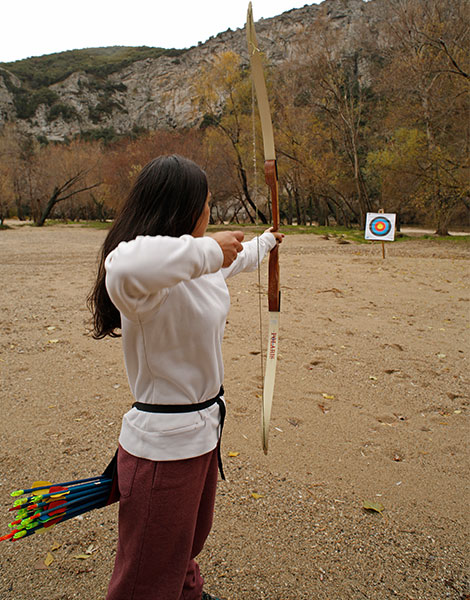
Archery on the banks of the Nestos River
© Nikos Kokkas
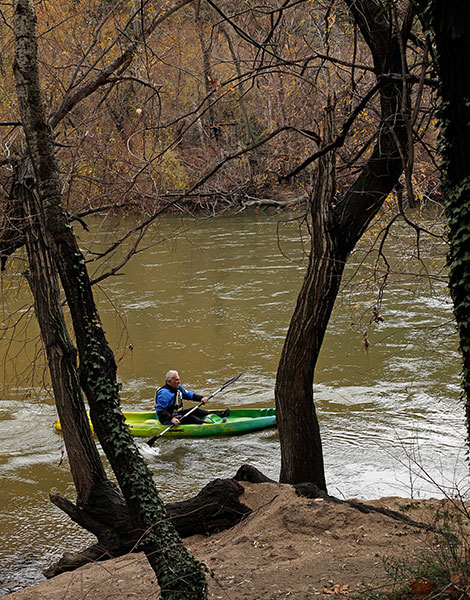
Kayaking on the Nestos River near the village of Toxotes
© Nikos Kokkas
Kayaking: Paddle down the river through the Stena tou Nesto with the steep slopes of the mountains rising up on either side. Hiking: Deserted villages, the river’s twists and turns, thick forests and passing trains – you will see all of these when hiking alongside the Nestos. The trail begins in the village of Galani, next to the river, passes by the deserted villages of Kromniko and Komnina and continues towards Stavroupoli. To get from Galani to Komnina takes about 5-6 hours. The route is suitable for kids 14 years and up.
Rafting: If you want to raft down the Nestos you will need to head a little further north to Paranesti in the are of Drama, which is where you will launch from. The route is stunningly beautiful and as you pass down the gorge you will come to various successions of rapids, making the journey fun and exciting. Rafting can be done whenever the weather permits and the experienced guides will tell you whether the conditions are suitable. For all of the above contact the company Riverland (Toxotes, tel. +30 25410.62488).
If you are driving, in the village of Toxotes a 39 km route begins that take you through the Stena tou Nestou, running alongside and above the river and ending in Stavroupoli. You will be able to see the river in the gorge from high above and you will pass through the abandoned villages of Kromniko and Livera. The road has a lot of twists and turns, meaning that the drive will take you about an hour.
You can also travel between the two villages by train – one of the prettiest train rides in Greece, with the tracks running alongside the river.
(Info: TRAINOSE, tel. +30 14511 www.trainose.gr)
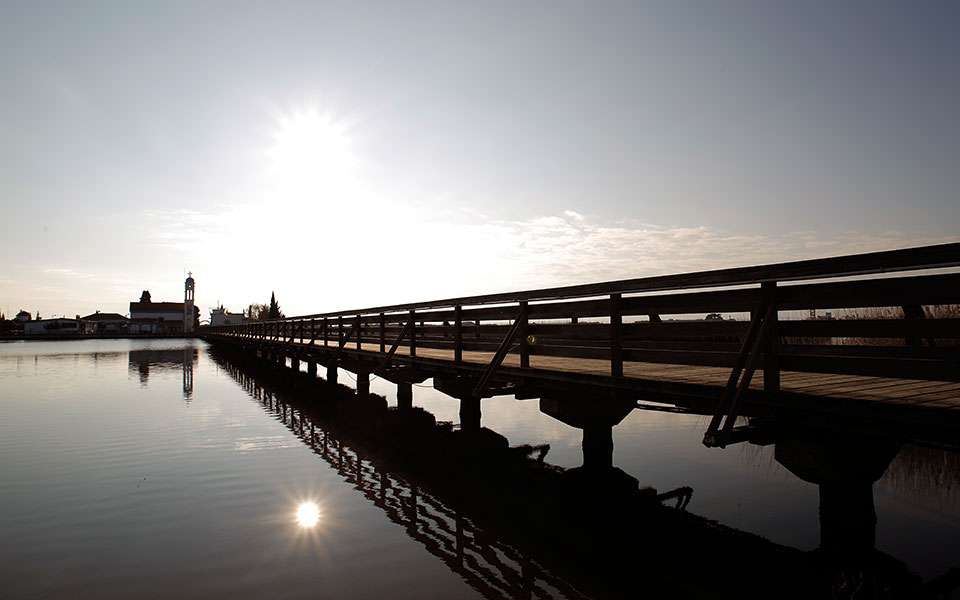
Porto Lagos
© Nikos Kokkas
“At this time of year the flamingos have gone, you won’t find any,” ‘E’ confidently told us. And yet, many of the exotic birds winter in the wetlands of Thrace. Their numbers increase in March and October, but it is certain that you will see dozens of the elegant pink birds no matter what time of the year you visit.
Many of the birds are non-migratory, spending the whole winter in the same place, while other members of the species travel between Europe and Africa, which is why in certain months the numbers in Thrace increase. Reed beds, flooded meadows, shallow waters and trees cover the expanse between the village of Nea Kessani (20 km from Xanthi) and the village of Imeros of Rodopi (53 km from Xanthi).
To begin with you will have Lake Vistonida to your left and the lagoon of Porto Lagos on your right. Aside from flamingos, dozens of other species inhabit the area including cormorants, pelicans and white storks. And seeing a flock of flamingos all take flight at once is a magical moment.
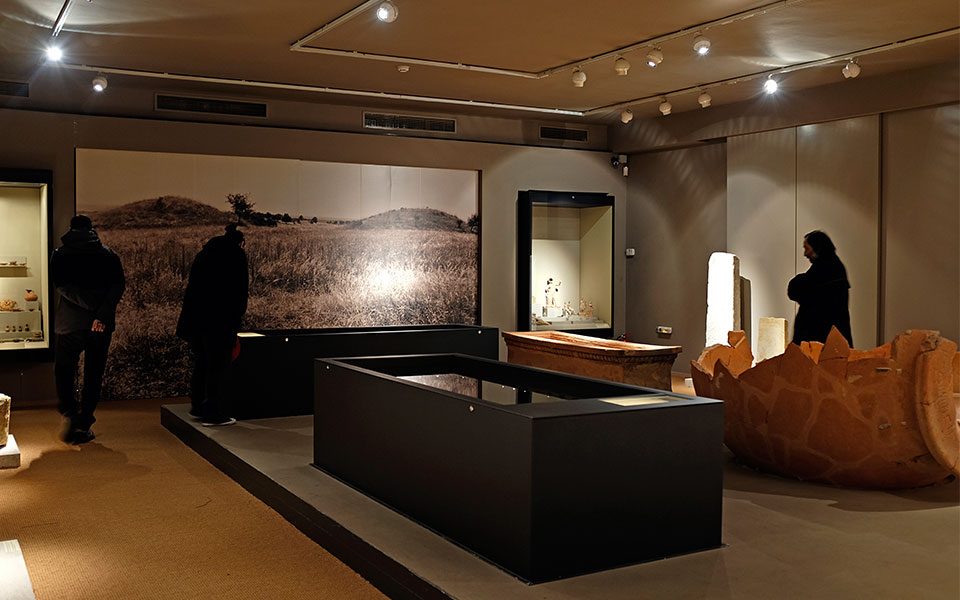
The Archaeological Museum of Avdira
© Nikos Kokkas
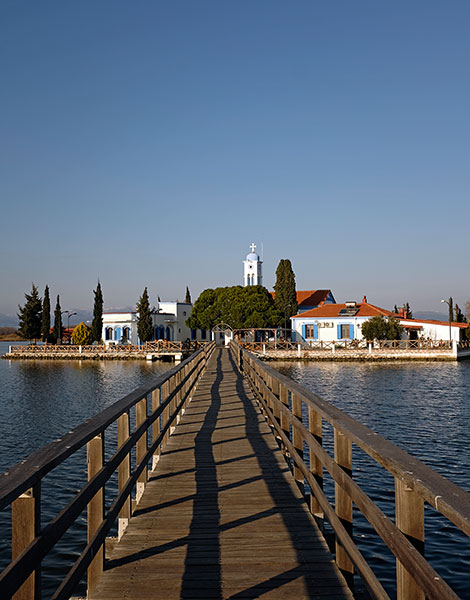
The wooden bridge which leads to Aghios Nikolaos, a little after Porto Lagos
© Nikos Kokkas
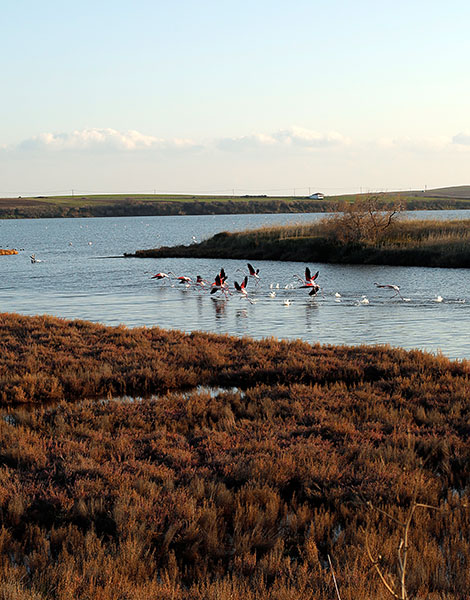
Flamingos in Porto Lagos
© Nikos Kokkas
The Archaeological Museum of Avdira (Avdira, tel. +30 25410-51003, Monday-Sunday 08.00-15.00, 2 euros). Artifacts from the lives, homes and graves of the residents of the ancient city of Avdira – the homeland of Democritus – are on display in this tasteful museum. Particularly impressive are the jewelry, the pottery as well as the reconstructions of the tombs (20km from Xanthi).
The church of Aghios Nikolaos is built on a small island; a bit further on is the chapel of Panaghia Pantanassas. A wooden pedestrian bridge links the two with each other and the mainland. Come here to enjoy the landscape, but also to see the many birds in the area (27km from Xanthi). You will see it on your right hand on the Xanthi-Komotini country road, 2km after Porto Lagos.
Officially it belongs to Komotini, but Fanari is the area’s main port and where you can enjoy fresh fish at good prices. Either head to Touristiko Periptero Fanariou (Fanari, tel. +30 25350-31202) or to the taverna Faros (Fanari, tel. +30 25350-31311). Both have sea views and fresh fish and seafood from the local fishermen (37km from Xanthi).
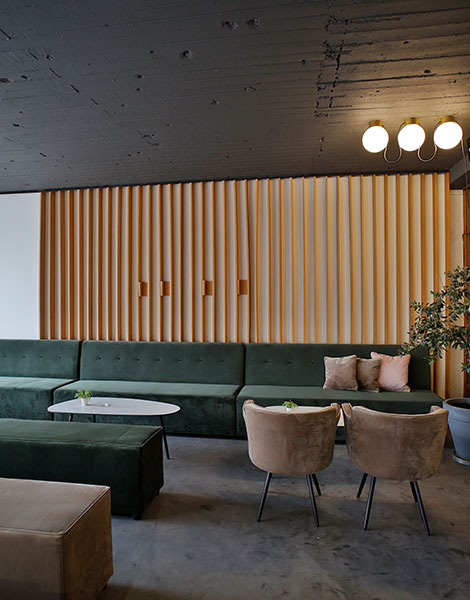
Hotel Xanthippion
© Nikos Kokkas
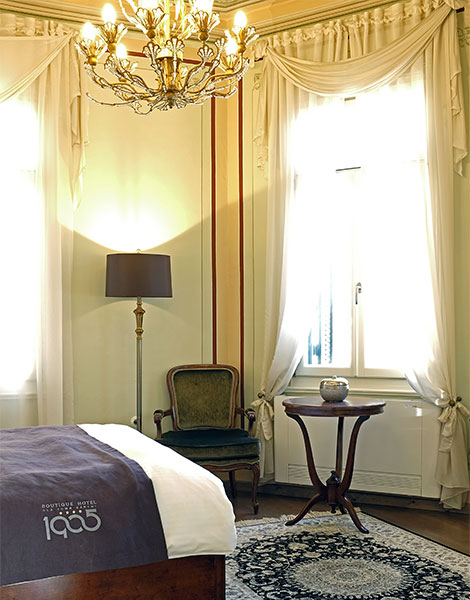
1905 Boutique Hotel
© Nikos Kokkas
1905 Boutique Hotel (5 Hasitzorglou, Xanthi Old Town, tel. +30 25410-77362, from 100 euros for a double room with breakfast). Housed in a building that has been classed by the Ministry of Culture as a protected monument and work of art, its location is ideal for strolls around the Old Town, and its rooms and areas have been tastefully renovated.
Hotel Xanthippion (212 28th October, Xanthi, tel. +30 25410-77061, from 49 euros for a double room with breakfast). Selling points include its prime location in the heart of the city, and its reasonable prices.
Elisso Xenia Hotel du Nord (9 Vas. Sofia, Xanthi tel. +30 25410-84400, from 90 euros with breakfast). The product of a brilliant restoration of one of the country’s historic Xenia hotels. To be next to the Nestos River opt for one of the rooms in the guesthouse.
Kokkymelon (Toxotes, tel. +30 25410-93551, from 63 euros for a double with breakfast). Housed in a renovated stone building.
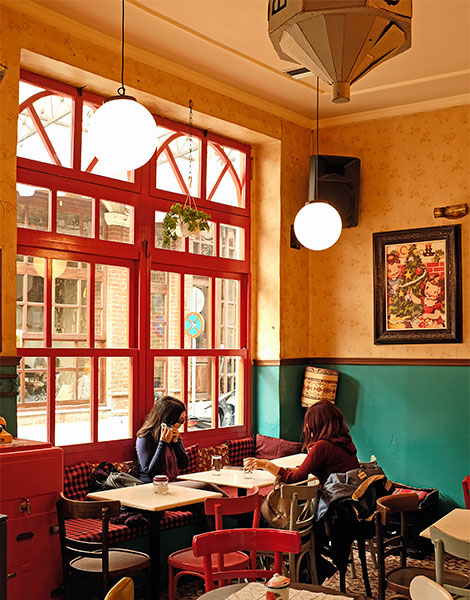
Dili dili Cafe
© Nikos Kokkas
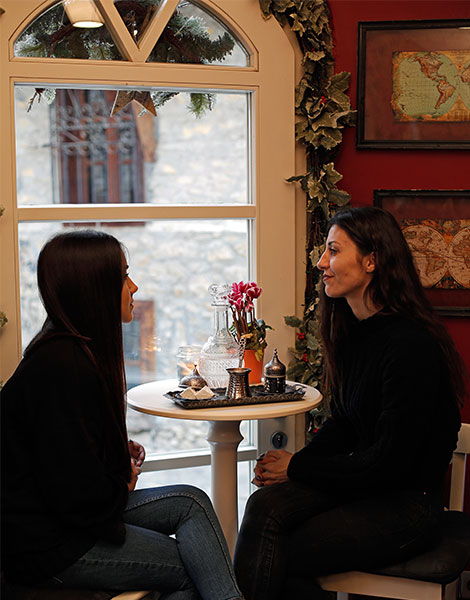
Tyflomiga Cafe
© Nikos Kokkas
Dili dili (2 Pygmalionos Christidi, Old Town, +30 25415-50575). Open from the morning for coffee until late at night, it is a popular meeting point in town. Offers traditional Greek coffee, espresso prepared with care and a wide variety of drinks.
Tyflomiga (20 Orfeos, Old Town, tel. +30 25410-64860). Their Greek coffee is served with a traditional loukoumi sweet on a silver tray; in the evening the music volume is turned up and the bar fills up.
Alchimeion (9 Filippou Amoiridi, Old Town, tel. +30 25410-66354). Elaborate but balanced cocktails, good music and friendly prices.
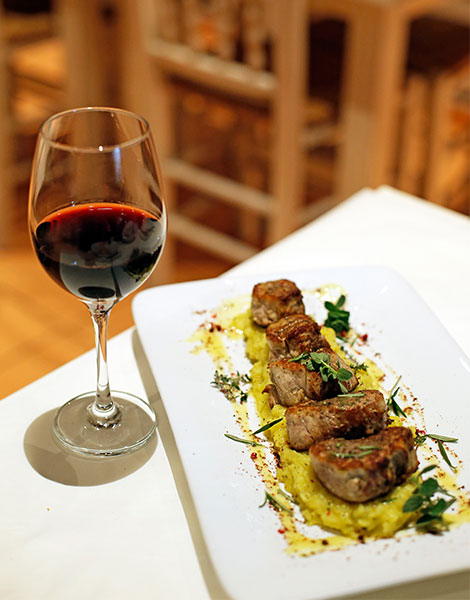
41
© Nikos Kokkas
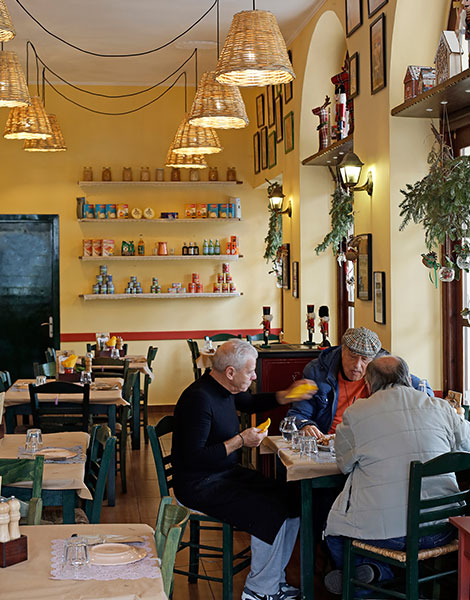
Pegasus
© Nikos Kokkas
The city’s cuisine is clearly inspired by Near-Eastern cooking. Thracian and Macedonian elements are also prominent, making Xanthi a gastronomic destination. Meat often has a central role, while further south closer to the sea you will find plenty of seafood. Try a kebap with yoghurt sauce, hunkar begendi, as well as sweets from Asia Minor such as baclava, kadaifi, and kazan dipi.
Pegasus, (1 Dimotikis Agoras and Beni Konstantinou, tel. +30 25410-29680). On the corner of the Municipal Market you will enjoy fresh, well-cooked spit-roasted meat. The space is warm and tasteful, and the service friendly and efficient.
41, (41 El. Venizelou, Xanthi, tel. +30 25410-24291). A tiny establishment with just 4 tables, one person in the kitchen and one server. But everything we tried was well-made, such as the pappardelle with smoked eel and the meatballs.
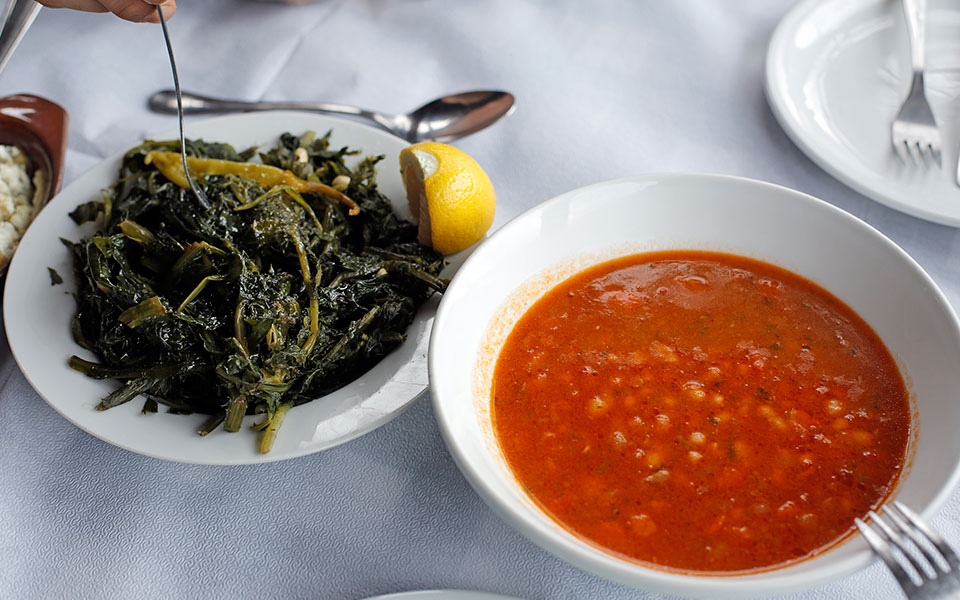
Pilima
© Nikos Kokkas
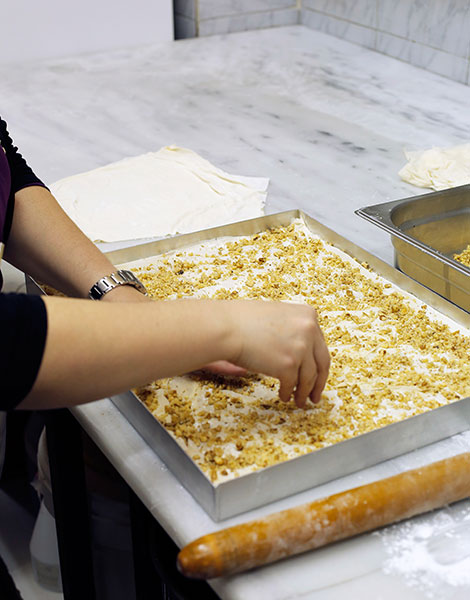
Kazani
© Nikos Kokkas
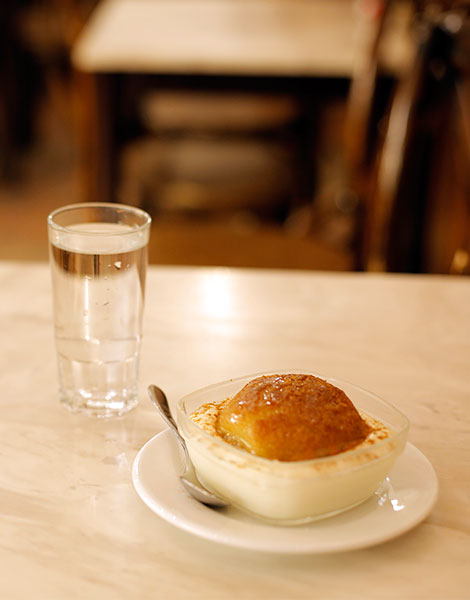
Nea Ellas
© Nikos Kokkas
Palaia Polis (7 Chasirtzoglou, Xanthi, tel. +30 25410-68685). Thracian and Near Eastern cuisine, a pleasant atmosphere and quick service.
Pilima (Pilima, tel. +30 25410-24242). Delicious kebap, grilled meats and slow-cooked dishes with Near Eastern influences.
Nea Ellas (8 Vas. Konstantinou, Xanthi, tel. +30 25410-21095). Delicious sweets from Asia Minor.
Kazani (278 28th October, Xanthi, tel. +30 25410-65866). The sweets are made in their workshop in the same space. Exceptional kazan dipi made in a copper pot and then brûléed.
Papaparaskevas (186 28th October, Xanthi, tel. +30 25410-22677). A branch of this patisserie operates in the southern Athenian suburb of Glyfada, but the original was first opened here in 1926, making its famous chocolate-covered kariokes (nut-filled sweets).
When the summer crowds depart, Greece’s...
What do kiwis have to do...
Without noise or concrete, the Old...
Four guesthouses set in unique landscapes,...